4x4 tour around Nuka Hiva

Jackamy
Paul & Derry Harper
Thu 15 Apr 2010 03:31
|
We booked a guided tour around the island
for 8 of us, Blue Magic, Bionic and Jackamy, Miss Tippy chose to hire a car and
drive themselves but we thought we'd probably get lost doing that and we
wouldn't have the local knowledge as to what we were driving past or looking at.
So first thing Tuesday morning we all piled into a pick-up with our tour guide
Jocelyne to set off and explore the island. The winding roads took us to the
village of Tai Pi Vai, the 'Valley of the Cannibals' made famous by Herman
Melville in his book "Taipee". The traditional activities of vanilla harvesting
and copra production flourish in the fertile and luxurious valley along with
crustacean fishing. We even saw a man fishing for eels in a river - crazy man!
All the villages on the island have an infirmary, a city hall, a school and a
church. The large church which is apparently full every sunday was very pretty
and filled with many intricate wood and stone carvings. Traditionally the best
sculpture and wood carvings have come out of the Marquesas, where fine tiki
(sacred statues), bowls, mortars and pestles, spears and clubs are carved from
rosewood, tou wood or in stone.
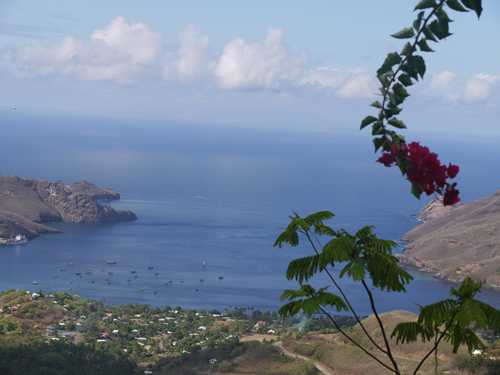 A view of Taiohoe
Bay
 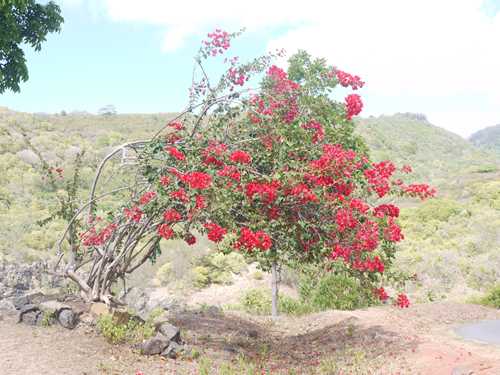 A mango tree and a
hibiscous tree
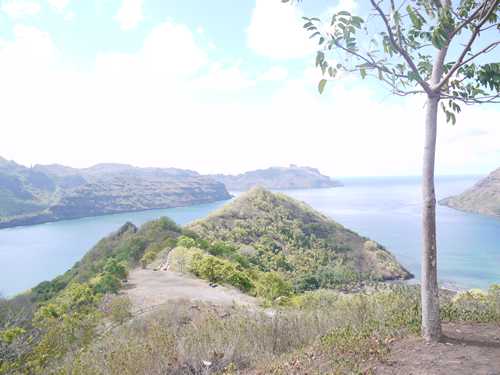 A view of three anchorages on
the South East of Nuka Hiva
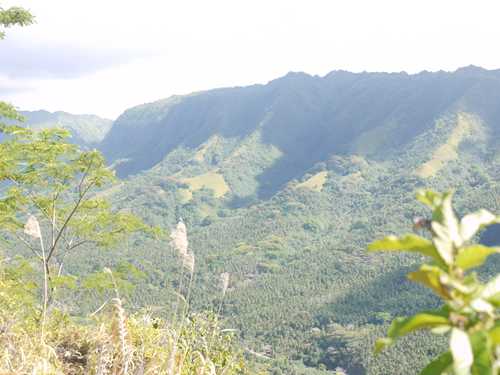 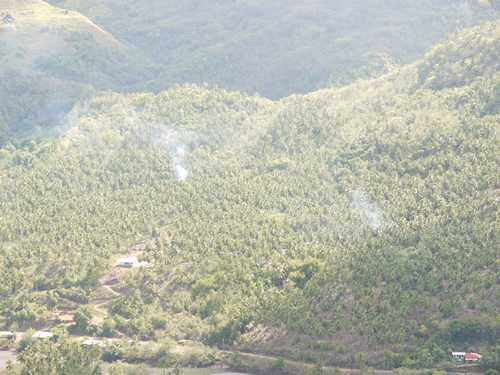 Taipivai Valley - hundreds and
hundreds of coconut trees
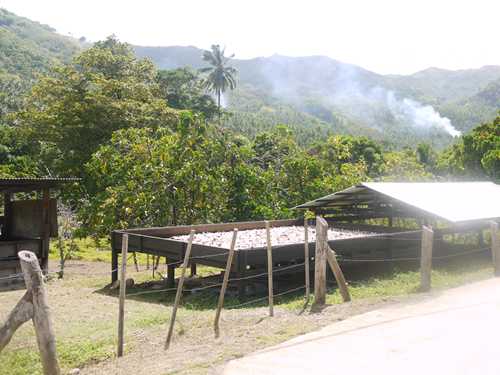 Drying out the coconut for the
copra
 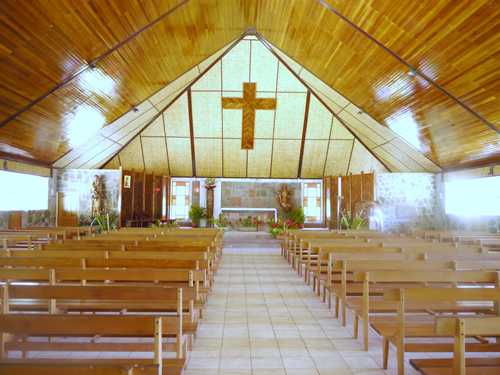 The village church
 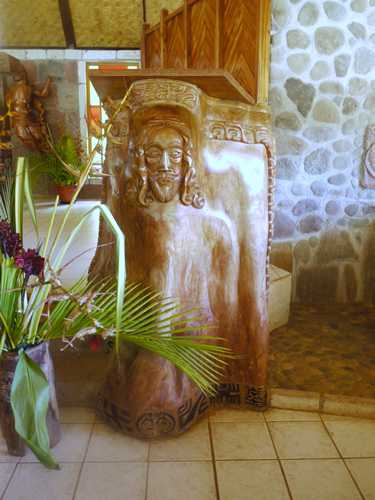 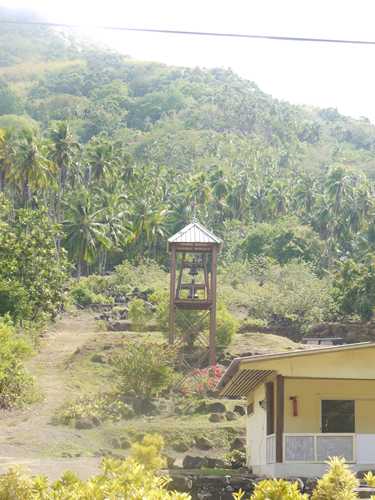  The bell tower and local
houses
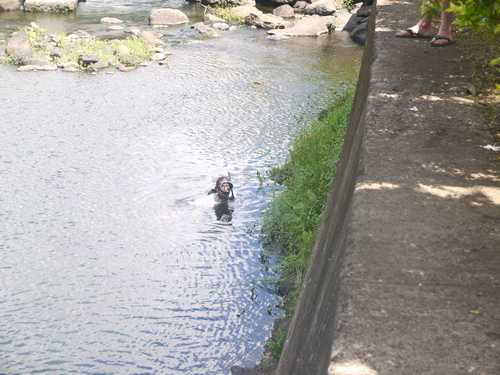 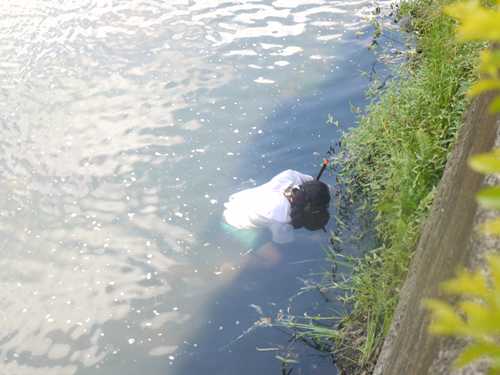 Catching eels!
From there we climbed the mountains to the
centre of the island, where we saw two huge waterfalls, Teuakueenui and Mahuiki.
Unfortunately as it hasn't rained for 6 months there wasn't much to see water
wise but they were still impressive. Jocelyne stopped off at numerous points
along the roads for us to take pictures of the beautiful views and to tell us
bits of information about all the vegetation and many more. We arrived on the
other side of the island at Hati Heu in time for lunch at Chez Yvonnes. The
town's focal point is the wooden church, and the tiny seafront mairie houses a
small museum with a collection of traditional Marquesan artefacts. At the end of
lunch Jocelyne used scraps from the kitchen to entice eels in the river. When
she first mentioned this I don't think any of us expected what followed. A few
30 cm eels popped out to investigate but the metre long eel that clambered over
the stones up the river stole the show. It was a horrible creature but very
impressive!
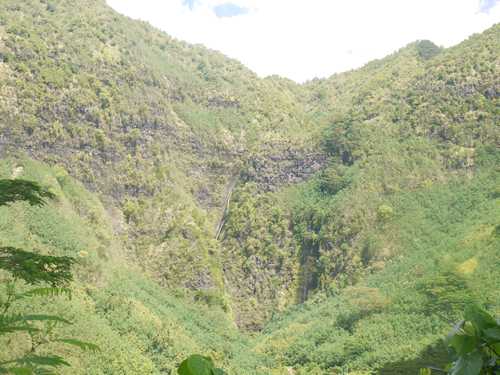  Teuakueenui
Waterfall
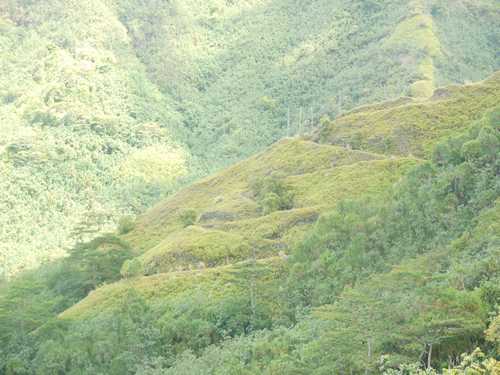 You can see the zig zag path
down the mountain side that ancient Marquesans used to walk or ride up
regularly - some still do use these paths
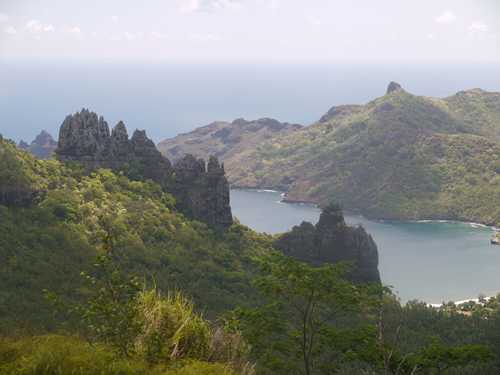 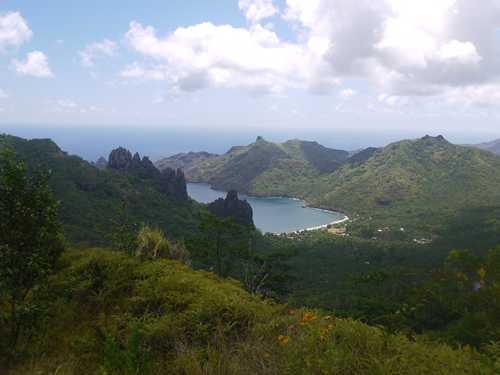 Views of Hati Heu
Bay
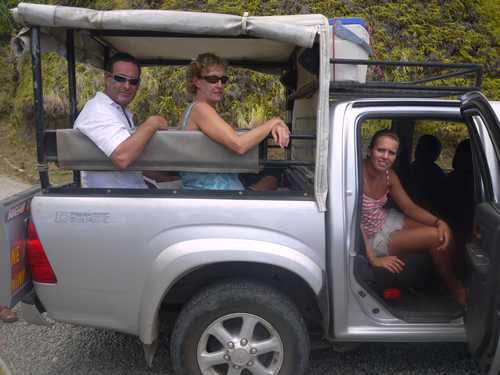 Mark, Chrissy and Amy in the
4x4
 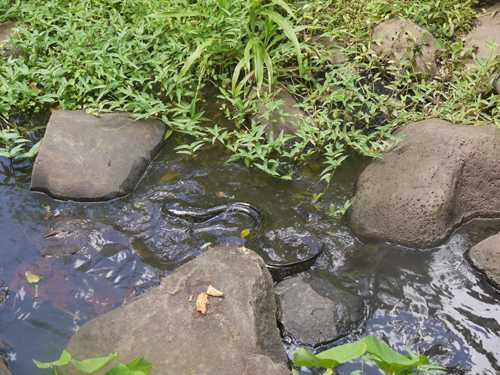 The giant eel
 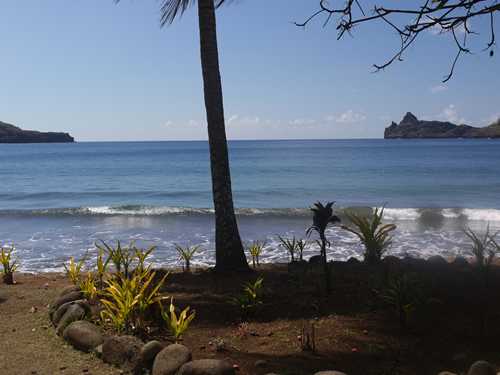 Chez Yvonnes and the
view
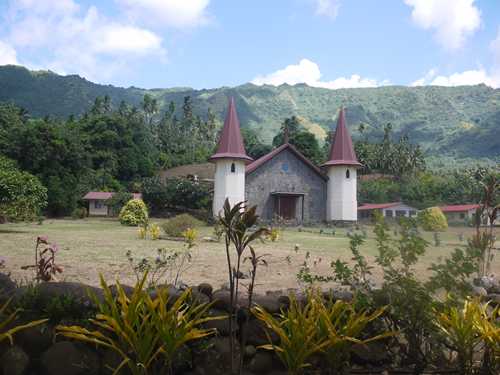 The village church
A statue of the Virgin Mary watches over
Hatiheu from high up on a rocky mountain, probably some 500 metres high. When
the statue was built ancient Marquesans would climb up the mountain with one
piece of the statue at a time and understandably this took a long time to
complete, I'd say it was worth it though, it's pretty spectacular. The downside
is that every two years someone has to climb the mountain to paint the statue as
she is white.
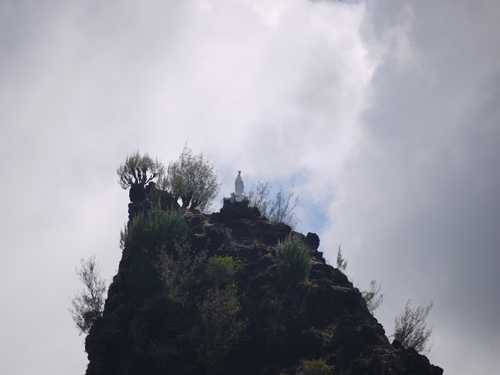 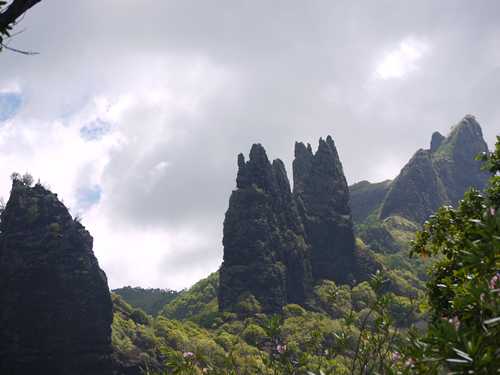 The statue on the
mountain
 After lunch it was back onto the dirt track,
to climb the 490m Teavaitapuhiva Pass to enjoy the views once again. Shortly
after leaving the village we stopped off at the Hikokua archaeological site
where modern tikis have been added to the old ones, and the vast Kamuihei and
Tahakia archaeological site. It is at these sites that cannibalistic sacrificial
ceremonies took place right up into the 20th century. The stone 'tikis' serve as
guardians to the ceremonial sites entry to which was taboo. Ceremonies were held
at the Marae, sites where all important decisions were made, possibly 3 or 4
times a year. The marae had the essential function of allowing humans to
communicate with the world of the Gods and ask them to influence events such as
the quality of their harvests of successes at war. Only the priests would
perform these rituals and to get results the priest would make offerings to the
Gods. The best gifts would entice the Gods to be generous to men and the biggest
gift that the Polynesians could give the Gods was human flesh in the form of
human sacrifices. After the sacrifice had been made the priest and all high
ranking Polynesians would eat the eyes because they believed this would give
them knowledge, the heart as this would give them strength and the liver I can't
remember why. Very very interesting!
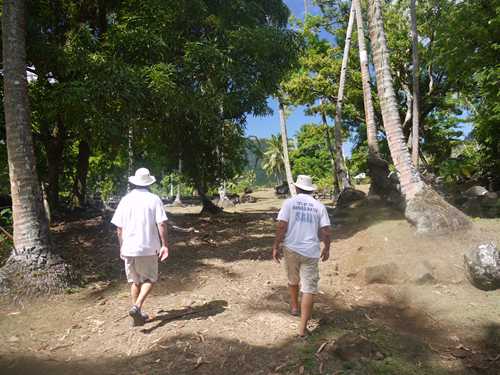 Tweedledum and tweedledee
entering the site
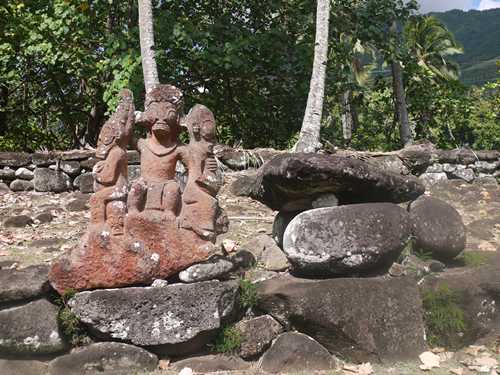 A tiki and a table for
preparing the bodies
 Another tiki
  To the left is the platform
where the ceremonies took place and to the right is the view of the site from
the platform
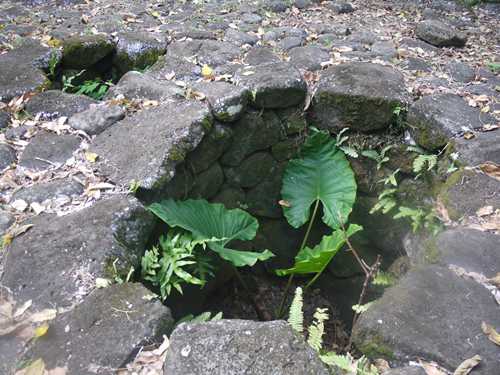 The larger hole is where the
men would be placed until one was chosen to be sacrificed and the smaller hole
is where the chosen one would be made to wait
 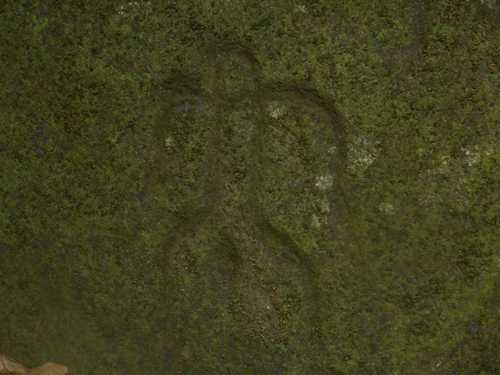 A rock covered in Petroglyphs.
You can't see it too clearly but the right picture is a close up of one of the
petroglyphs
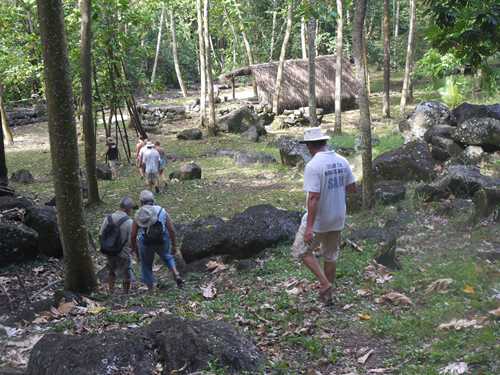 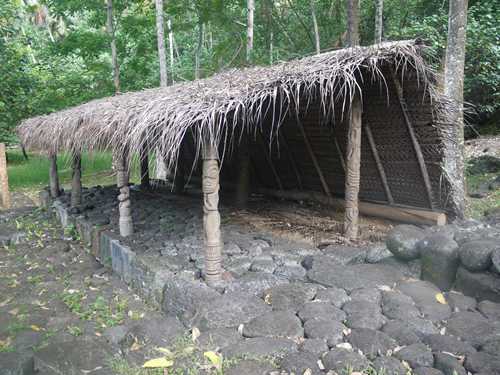 Walking through the site to the
priests home
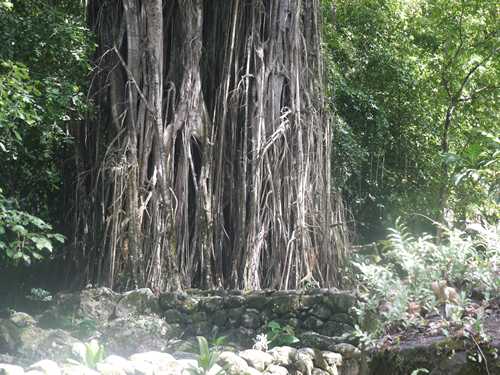 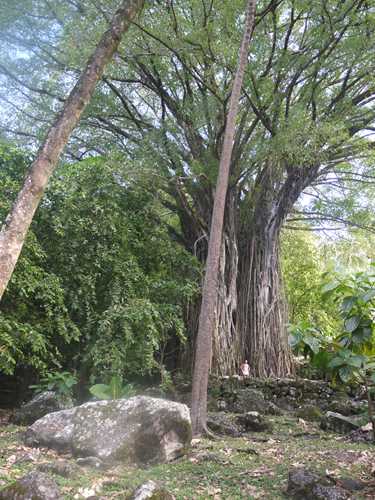 A banyan tree - you can just
about see Amy at the base of the tree in the right image so that you can get a
feel for the size of it. Once the bones from the human sacrifice had been
prepared they would be placed in the roots of these trees.
From here we began the car journey back to
Taiohae with a few more stops to take in the scenery and enjoy a mango or two.
The roads are lined with horses, cows, goats and chicken so there was always
something new to look at. All of the horses are owned by someone and most were
tied up on a grassy patch as were the cows. Riding horseback is the traditional
method of transport and tracks are clearly visible in the mountain ridges which
some Marquesans still use to travel from one valley to another. The goats and
chickens roam free and if you can catch them you can eat them!
  The dusty roads lined with
animals
 More views of Taiohae
Bay
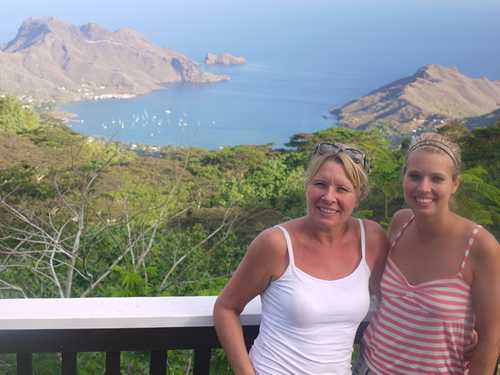  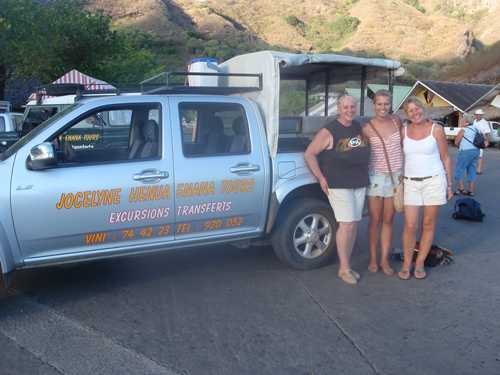 Me and Amy with Jocelyne our
guide
When arriving back in the village we treated
ourselves to a crepe as the crepe van is conveniently located next to the dinghy
dock.
An excellent day out!
|